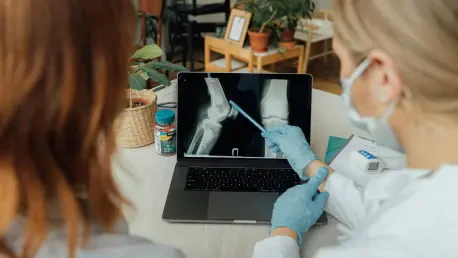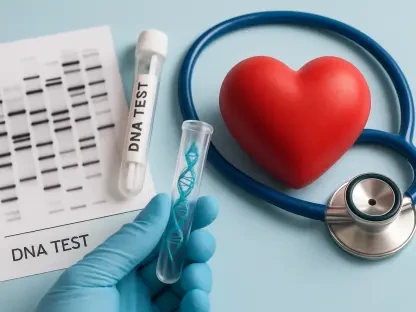In the evolving landscape of digital health, Ireland has positioned itself at the forefront of telemedicine by focusing on integrating innovative healthcare solutions with robust regulatory frameworks. The Irish government’s strategic emphasis on digitalization aims to streamline healthcare delivery and enhance patient outcomes, a mission underscored by the Health Service Executive’s (HSE) comprehensive initiatives. These efforts are further complicated by evolving EU regulations, such as the European Health Data Space (EHDS) Regulation, which strives to harmonize health data management across member states. Against this backdrop, Ireland is embarking on an ambitious journey to marry technology with healthcare under the scrutiny of a complex legal landscape.
Strategy for Digital Health Transformation
National Digital Health Initiatives
Ireland’s approach to revolutionizing its healthcare system is driven by a focus on digital solutions, with a key component being the transition to fully electronic healthcare records. The HSE’s roadmap outlines the creation of a national electronic prescribing system and the enhancement of remote health monitoring. Particularly notable is the development of the HSE Health app, designed to grant patients personalized, secure access to their medical records and appointments. By phasing out paper records, this initiative promises to modernize healthcare delivery and facilitate a seamless patient experience, aligning with the ambitions of the new Irish government.
The government’s digitalization strategy is also pursuing a transformative telehealth model that encompasses a virtual ward concept. This initiative is set to provide comprehensive care through audio and video consultations, remote monitoring, and online therapies. Such advancements cater not only to urban populations but also extend crucial services to rural communities. Significantly, the National Digital Health Clinical Office is at the helm of driving these initiatives, ensuring that Ireland’s adoption of telemedicine is both inclusive and comprehensive.
Integration with EU Regulations
Ireland’s digital health ambitions are being shaped in conjunction with the broader framework of EU regulations, particularly the seminal EHDS Regulation. This regulation is pivotal in implementing the European Commission’s data strategy, promoting a sector-specific health data space across the EU. It emphasizes the importance of Electronic Health Data (EHD) for primary healthcare uses and lays out conditions for secondary uses, with strict stipulations to protect patient data integrity. Immediate access to critical health information, including electronic prescriptions and patient summaries, is mandated, bolstering cross-border healthcare.
This regulatory environment frames how Irish healthcare providers and digital health companies operate. By coordinating national policies with the EHDS requirements, Ireland seeks to be a leader in data-driven healthcare. The regulation’s provisions on data portability and governance for secondary data usage aim to aid in research, innovation, and policymaking. For Ireland, aligning with these standards underscores a commitment to enhancing patient rights and enabling a more integrated healthcare system.
Navigating Regulatory Complexities
The Challenges of Converging Technologies
The rapidly changing landscape of digital health technology presents unique challenges, particularly in regulation. The convergence of medical devices, medicinal products, and software demands precise classification to ensure compliance with the appropriate standards. Software used on connected wearables, for instance, may fall under the EU Medical Device Regulation (MDR), necessitating registration and conformity assessments. Missteps in classification may lead to legal repercussions, emphasizing the need for thorough regulatory comprehension among healthcare stakeholders.
Companies venturing into Ireland’s digital health market face additional obstacles pertaining to data protection and interoperability requirements outlined in the EHDS. Intellectual property rights associated with electronic health data introduce another layer of complexity. Not only must firms navigate the regulatory demands of data sharing and user consent, but they must also negotiate the potential disclosure of proprietary data under the EHDS for secondary uses that could benefit public health. These regulatory arenas demand careful strategic planning and industry acumen.
Opportunities and Innovations in Telemedicine
Despite these challenges, Ireland’s telemedicine landscape is ripe with opportunity. The HSE’s Telehealth Roadmap demonstrates an encouraging commitment to advancing digital health services by enhancing remote consultation capabilities and boosting the quality and accessibility of healthcare. Telehealth initiatives such as remote consultation, health monitoring, and online therapy support have become integral to Ireland’s strategy, significantly improving the overall patient care experience.
The expansion of online support and therapies represents a transformative shift in mental health care provision, broadening access to cognitive behavioral therapy and other psychological interventions. This digital health evolution promises not only to address the traditional barriers of distance and wait times but also to provide a more personalized patient care approach. Irish companies and international firms targeting this market are finding fertile ground for innovation, developing solutions that can withstand the demanding regulatory scrutiny imposed by both national and EU regulations.
European Health Data Regulation’s Impact
Health Data Management and Protection
The publication of the EHDS Regulation was a landmark in the evolution of health data management within the EU, dictating how electronic health information should be utilized and shared. By supplementing existing data protection laws like the General Data Protection Regulation (GDPR), the EHDS established specific measures to ensure data rights and management are consistently applied across the healthcare industry. It prioritizes immediate, seamless access to health data for primary uses while offering a framework for secondary demands like scientific research and innovation.
Understanding the full implications of the EHDS is paramount for Irish and European healthcare entities. While the EHDS outlines clear benefits in streamlining health data processes and facilitating borderless healthcare delivery within the EU, compliance remains a complex undertaking requiring meticulous attention. Firms focused on advancing in this space must effectively balance the advantages of expediting data-driven healthcare advancements with the responsibilities involved in safeguarding patient information.
Regulatory Enforcement and Industry Compliance
Compliance with EHDS mandates extends beyond mere organizational adaptation, as the regulation includes strict enforcement mechanisms overseen by Health Data Access Bodies (HDABs). These bodies hold the authority to revoke data permits from data users that do not adhere to the regulation, halting non-compliant processing operations. Moreover, fines for infringements are substantial, posing substantial financial risks for entities found to be in violation. The enforcement provisions in EHDS underline the critical nature of regulatory adherence within the digital health industry.
For businesses aiming to harness health data for innovation and public health improvements, demonstrating interoperability and meeting the stringent requirements for technical documentation, EU declaration of conformity, and CE marking are necessary prerequisites. With Ireland embracing digital health solutions, the landscape presents a stage for companies to thrive while ensuring their endeavors align with regulatory expectations. Navigating these intricacies effectively can position firms to contribute significantly to advancing healthcare in Ireland and across the EU.
Embracing a Digital Health Future
The Role of the Health Technology Assessment Regulation
While Ireland and EU member states develop regulatory frameworks for digital health innovations, the Health Technology Assessment Regulation (HTAR) emerges as another vital piece of the puzzle. This regulation serves to standardize the assessment of digital health technologies across the EU, promoting joint clinical evaluations and fostering discussions regarding technological advancements. By encouraging collaboration among member states, the HTAR aims to streamline the evaluation process, though it does not extend to economic considerations like pricing and reimbursement.
Ireland’s alignment with HTAR principles further solidifies its commitment to driving constructive, scientifically backed improvements within its healthcare ecosystem. The upcoming joint assessments for new medical technologies, slated to begin by 2030, represent a structured effort to evaluate the implications of cutting-edge technologies on a broad scale. Such collective assessments promise to shape Ireland’s capabilities to adopt and support novel digital health solutions, bridging the gap between regulatory oversight and industry innovation.
Innovation and the Future of Irish Healthcare
Ireland’s proactive stance on integrating digital health solutions reflects a broader trend towards the modernization of healthcare systems worldwide. The synergy between the country’s national strategy and EU-wide regulations sets the stage for future technological advances, enhancing patient care and creating new avenues for innovation. By prioritizing digital health, Ireland is not only addressing immediate healthcare needs but also paving the way for sustainable, long-term advancements that will define the future of medical practice.
As Ireland continues its digital health journey, opportunities for growth and development abound. From fostering a regulatory environment that supports digital health integration to encouraging innovation through collaborative frameworks, the nation’s trajectory embodies a forward-thinking approach. The alignment of regulatory frameworks with technological advancements highlights an exciting era for telemedicine and digital health within Ireland. The country’s success in this arena could serve as a model for other nations, illustrating the potential of merging strategic policy, regulation, and innovation to revamp healthcare delivery and accessibility.
Throughout this journey, the collaborative efforts between Ireland and the EU emphasize the importance of a unified regulatory approach to harness the full potential of digital health. By ensuring compliance and fostering an environment conducive to technological progress, Ireland has poised itself as a leader in redefining the future of healthcare in the digital age.
Charting the Course for Institutional Adoption
In the changing world of digital health, Ireland has emerged as a leader in telemedicine by integrating innovative healthcare solutions with strong regulatory frameworks. The Irish government places a high priority on digitalization to make healthcare delivery more efficient and improve patient outcomes. This commitment is reflected in the strategic efforts of the Health Service Executive (HSE), which has launched comprehensive initiatives aimed at transforming healthcare through digital means. However, these efforts face challenges presented by evolving EU regulations like the European Health Data Space (EHDS) Regulation. This particular regulation seeks to standardize health data management across all member states, adding layers of complexity to Ireland’s ambitions. Despite these challenges, Ireland is on a bold path to combine technological advancements with healthcare services. This initiative unfolds amidst a landscape filled with legal intricacies. Ireland aims not only to lead in telemedicine but also to set a benchmark in harmonizing healthcare systems with cutting-edge technology, all within a stringent regulatory environment.









